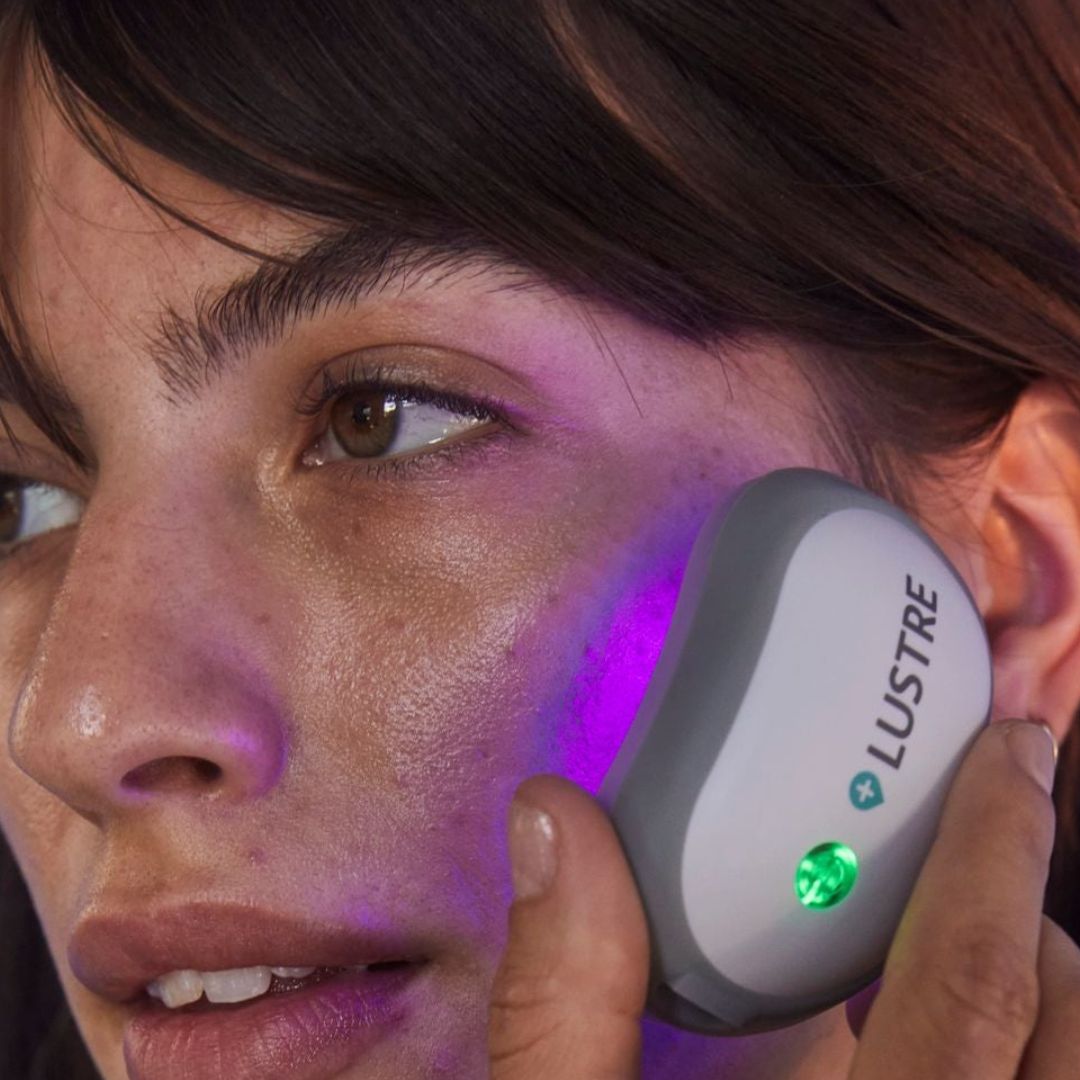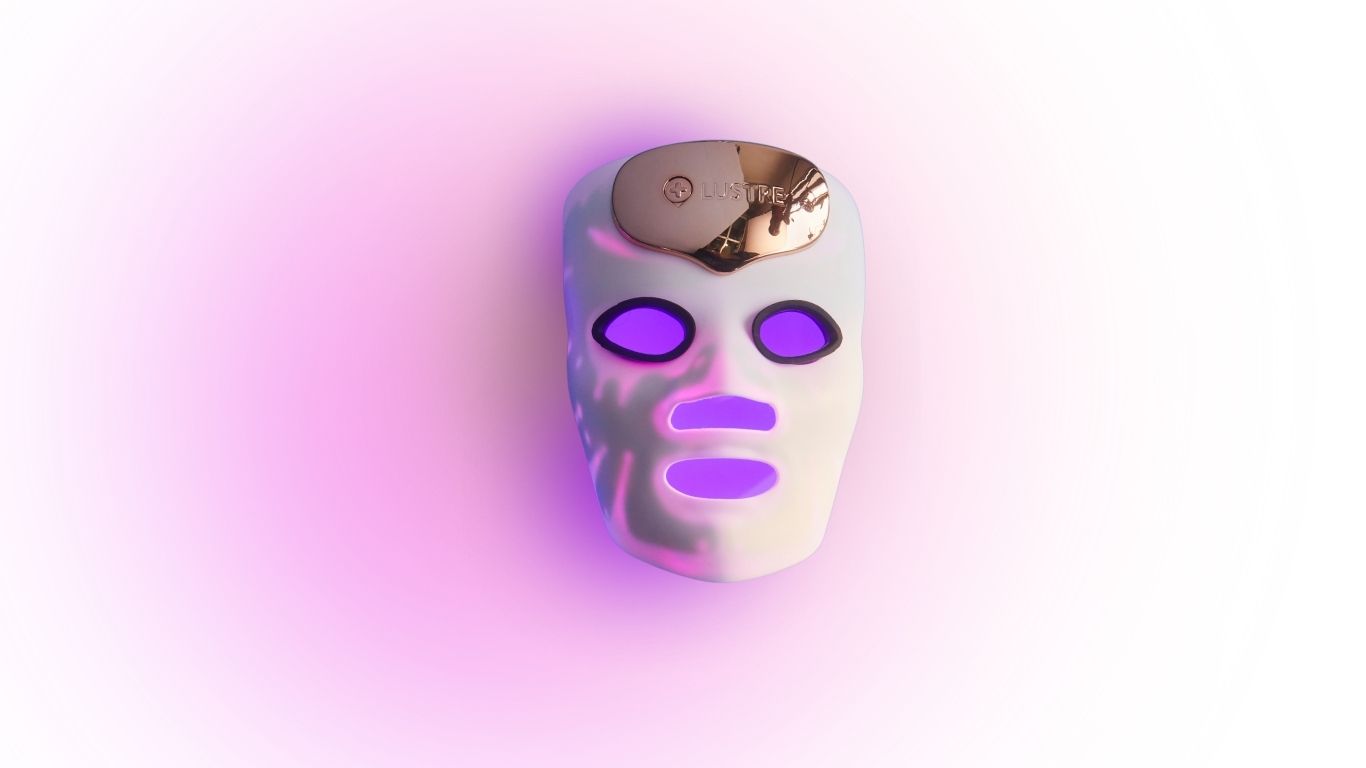Clinical Studies
Clinical testing plays a key role in validating the safety and efficacy of our products. It is also vital to substantiate product claims made throughout our communication, our website and on our packaging to ensure you feel reassured that the product we are offering you is not only safe but does what it says as it has been thoroughly tested.

Clinical study #1: Lustre Pure Light Classic Home Use Device Study- European LED Academy
Authors/investigators:
Dr. Michèle Pelletier (MD) Dermatologist. Toulon. President of the European LED Academy. Lead investigator.
Dr. Linda Fouque (MD) Dermatologist. Nice. Vice President of the European LED Academy.
Dr. Yannick Saussaye (MD) Dermatologist. Montpellier. Vice President of the European LED Academy
About the study:
The clinical effectiveness of Lustre Pure Light Classic in mild to moderate acne vulgaris following the standard IFU (instructions for use) was assessed by 3 independent Dermatologists from the European LED Academy following a standardised assessment protocol and Acne scoring system.
All patients were washed out of all other treatments 4 weeks before the study commenced and only used the Lustre Pure Light Classic devices during the period of the study.
After the initial scoring and consenting process the clinical results were assessed by each investigator on days 30, 60, 90 with a further observational assessment carried out on day 120 to assess maintenance and persistence of results based on the standard IFU (instructions for use) protocol for maintenance treatment.

Clinical study #2: Clinical efficacy of home-use blue-light therapy for mild to moderate acne.
Authors/investigators:
MICHAEL H. GOLD* ** , WHITNEY SENSING** & JULIE A. BIRON**
* Gold Skin Care Center, Department of Dermatology, School of Nursing, Vanderbilt University School of Medicine,
Vanderbilt University, Nashville, TN, USA, Fudan University (Shanghai Medical University), Shanghai, China, and
China Medical University, Shenyang, China,
**Tennessee Clinical Research Center, Nashville, TN, USA
About the study:
Introduction: Blue-light light-emitting diode (LED) therapy has become widely used for the treatment of inflammatory acne.
In this study we evaluated the efficacy of a home use blue-light LED application in improving lesions and shortening their time to clearance. Methods: This was an IRB approved randomized self-control study. For each patient ( n 30), 2 similar lesions, one of each side of the face were chosen for treatment with either a blue-light LED hand-held or sham device.
Treatments ( n 4) were conducted twice daily in the clinic and lesions were followed-up till resolution. Reduction in blemishes size and erythema and the overall improvement were evaluated by both the physician and the patients. Time to lesion resolution was recorded. Results: There was a significant difference in the response of lesions to the blue-light LED application as opposed to the placebo in terms of reduction in lesion size and lesion erythema as well as the improvement in the overall skin condition ( p 0.025). Signs of improvement were observed as early as post 2 treatments. Time to resolution was significantly shorter for the blue-light LED therapy.
Conclusion: The results support the effectiveness of using blue-light LED therapy on a daily basis for better improvement and faster resolution of inflammatory acne lesions.

Clinical study #3: An open study to determine the efficacy of blue light in the treatment of mild to moderate acne
Authors/investigators:
C. A. MORTON*, R. D. SCHOLEFIELD**, C. WHITEHURST*** & J. BIRCH***
*Department of Dermatology, Falkirk Royal Infirmary, Falkirk,
**Sequani Consumer, Vine House, New Street, Ledbury,
Herefordshire
***Photo Therapeutics Ltd, Station House, Stamford New Road, Altrincham, UK
About the study:
Background: The effective management of acne remains a challenge; achieving an optimal response whilst minimizing adverse events is often difficult. The rise in antibiotic resistance threatens to reduce the future usefulness of the current mainstay of therapy. The need for alternative therapies remains important.
Phototherapy has previously been shown to be effective in acne, with renewed interest as both endogenous and exogenous photodynamic therapies are demonstrated for this condition.
Objectives: To determine the effect of narrowband blue light in the reduction of inflammatory and noninflammatory lesions in patients with mild to moderate acne and to evaluate patient tolerance of the therapy.
Methods: We performed an open study utilizing a blue LED light source in 30 subjects with mild to moderate facial acne. Two weeks after screening, lesions were counted and recorded by lesion type. Over 4 weeks, patients received eight 10- or 20-minute light treatments, peak wavelength 409–419 nm at 40 mW/cm2. Assessments were taken at weeks 5, 8 and 12 and lesion counts were recorded. Repeated measures-ANOVA and Dunnett’s tests, respectively, allowed assessment of the different scores over time and permitted comparison of mean counts.
Results: An overall effect on inflammatory counts was observed at week 5, and a statistically significant decrease in inflamed counts was detected at the week 8 assessments, which continued to week 12. There was little effect on non-inflamed lesions. The treatment was well tolerated with adverse events experienced generally rated as being mild and usually self-limiting.
Conclusions: Eight 10- or 20-minute treatments over 4 weeks with a narrowband blue light was found to be effective in reducing the number of inflamed lesions in subjects with mild to moderate acne. The treatment had little effect on the number of comedones. The onset of the effect was observable at the first assessment, at week 5, and maximal between weeks 8 and 12. Blue light phototherapy using a narrowband LED light source appears to be a safe and effective additional therapy for mild to moderate acne.

Clinical study #4: Safety and Effectiveness of a New Blue Light Device for the Self-treatment of Mild-to-moderate Acne
Authors/investigators:
*RONALD G. WHEELAND, MD, FACP; **ANDREA KORECK, MD, PhD
*Department of Dermatology, University of Missouri, Columbia, Missouri; **Department of Dermatology and Allergology, University of Szeged, Hungary
About the study:
Objective: To assess the safety and effectiveness of treating acne for eight weeks using a new blue light device at a dose of ~2J/cm2/day (representing typical full-face treatment) or ~29J/cm2/day (representing the typical dose after localized spot treatment of acne).
Design: Prospective, single-center, open-label study evaluating two levels of blue light in each subject.
Setting: Subjects were recruited from the local community for self-treatment at home.
Participants: Thirty-two subjects with mild or moderate facial acne vulgaris. Measurements: Inflammatory lesion count; number, severity, and redness of flares; improvement in skin characteristics (overall appearance, clarity, radiance, tone, texture, and smoothness); tolerability; subject satisfaction.
Results: The blue light treatment was associated with significant
reductions from baseline in inflammatory lesion count as early as Week 1 with ~29J/cm2/day and Week 3 with ~2J/cm2/day (P≤0.01). It was also associated with significant reductions in the number, severity, and redness of flares and with improvements in the skin’s appearance, clarity, radiance, tone, texture, and smoothness. Overall, 53 percent of subjects considered the treatment much gentler than traditional acne treatments and 61 percent were satisfied. Three adverse events were probably related to treatment—minimal transient skin dryness (2) and minimal transient hyperpigmentation (1).
Conclusion: The blue light treatment is effective and well tolerated, offering rapid, gentle, and convenient treatment of inflammatory acne. The blue light device offers a valuable alternative to antibiotics and potentially irritating topical
treatments and can also be used adjunctively to complement other therapies.
(J Clin Aesthet Dermatol. 2012;5(5):25–31.)
Frequently Asked Questions
-
Delivery option: UK Standard Delivery
Delivery time: Order before 12pm to receive in up to 3 working days. Delivered between 8am – 9pm (excludes Weekends & Bank Holidays).
Delivery Prices:
FREE delivery over £30!
£4.50 for orders below £30.00
Delivery Exceptions
We deliver to the Scottish Highlands and British Islands. However, we advise allowing for an additional four days for Standard Delivery.
-
You have the right to cancel any purchase up to 14 working days from delivery and receive a full refund. If you are returning your product, you must contact our Customer Services department at 01506592239 or customerservices@lustreskin.com who will provide you with the address for returning the product to us.
Please be sure to package the parcel securely (making sure you include a note of your name and address inside the parcel) and then return it to us.
You must return the products to us within 14 days of notifying us of the cancellation, in the same condition in which you received them.
Returning all or part of your order
You have the right to return all or part of your order up to 14 days from receiving the products.
When returning all or part of your order you will receive a refund for the products you have returned within 14 days of sending the item back to us.
We advise that you take out enough postal insurance to cover the value of the contents. Please save your proof of posting and tracking information until your refund has been processed.
You will be responsible for the cost and risk of returning the items to us.
You have a legal obligation to take reasonable care of the Products while they are in your possession. If you fail to comply with this obligation, we may have a right to claim the cost of any deterioration from you.
-
Yes, the LUSTRE® ClearSkin Technology devices are guaranteed to be free from defects for 12 months from the time of purchase.
All LUSTRE® devices carry a 1 year warranty. This means that the devices should be free from defects in material and workmanship for 12 months from its original purchase date, under normal use. This warranty extends only to the original retail purchaser with original proof of purchase and only when purchased from an authorised retailer or reseller. This warranty only extends if the mask is used in conjunction with authorised LUSTRE® accessories. If the product should become defective within the warranty period, contact the retailer where you bought the mask.
This warranty does not cover products damaged by:
- Accident, misuse, abuse, or alteration.
- Use with unauthorized accessories or use other than as instructed.
- Connecting to incorrect current and voltage.
Please click here to register your device.



